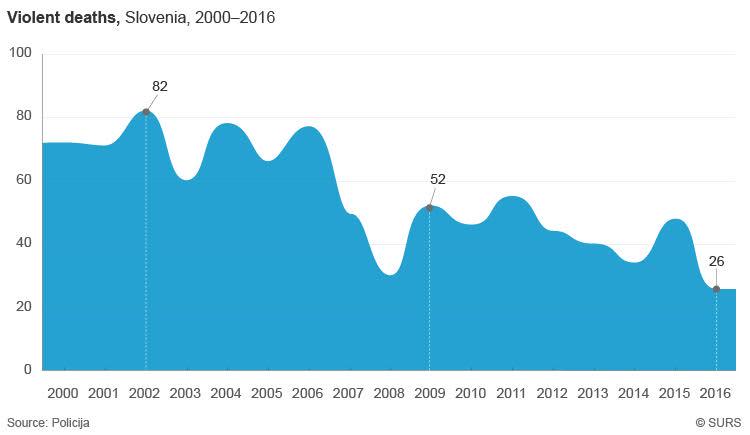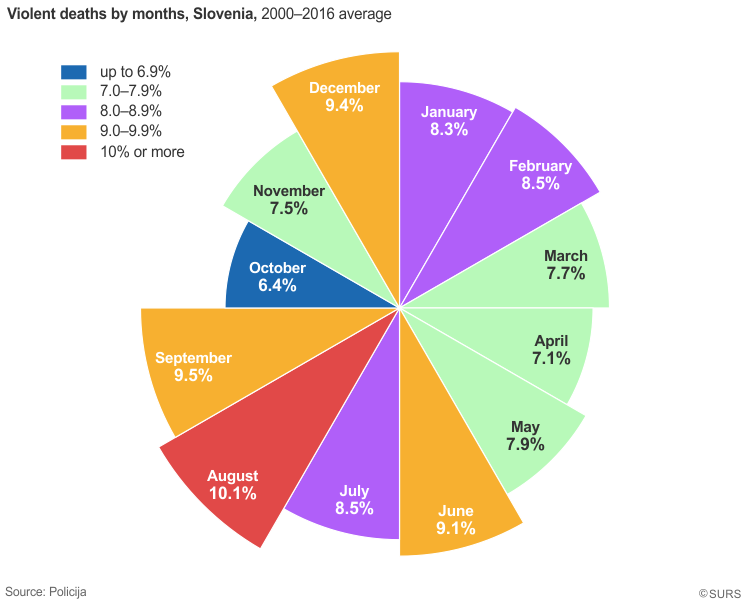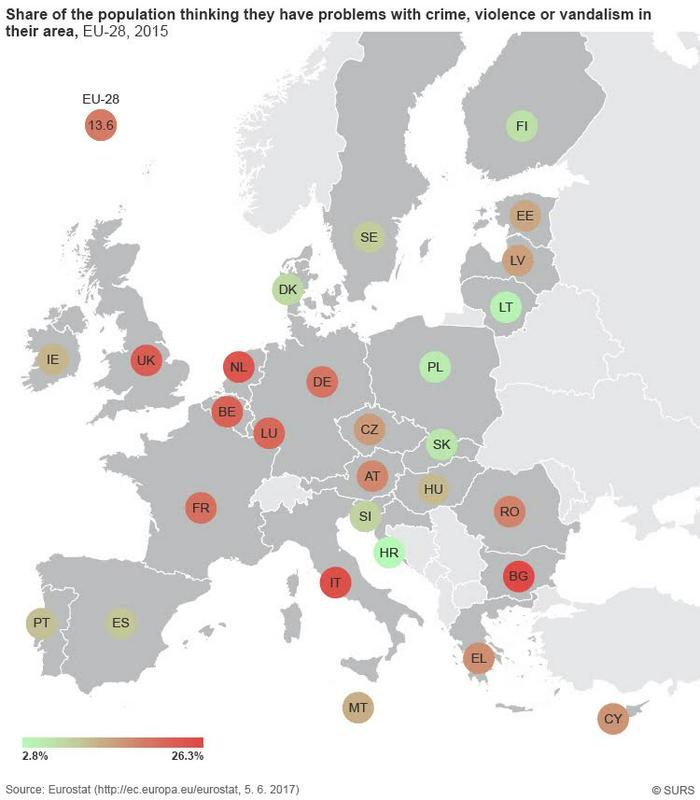





Number of violent deaths
In the 2000–2016 period 930 violent deaths were recorded in Slovenia; most of them in 2002 (82), relatively few in 2008 (30), and the fewest in 2016 (26). So it is clear that the statement that the number of violent deaths is rising is simply not true. It is definitely falling, but in recent years the media have been covering the cases in greater detail, making people think that life in Slovenia is becoming less safe than it used to be.
Who are the victims?
In the 2000–2016 period most violent deaths in Slovenia happened on the territory covered by the Ljubljana Police Directorate (35%). Victims were on average 39 years old. A review by gender shows that male victims were slightly younger than female victims: the mean age of male victims was 37 years and of female victims 44 years. Men represented slightly more than 70% of victims in this period.
In most cases (26%) the victim and the suspect did not know each other (there was no relationship between them). In 21% of cases they were acquaintances and in 15% of cases spouses or intimate partners. In 28% of cases the murder weapon was a knife, in 13% of cases it was a cold weapon (boxer, dagger, baton etc.), while in 16% of cases the victim was shot.
When do most violent deaths occur?
The question when do most violent deaths occur seems to be simple, but preparing the data the situation can become complicated. Slovenia has data on the start and end of criminal offences, but sometimes during the investigation it is not possible to determine the exact moment the crime was committed. In the data on violent deaths in the 2000–2016 period, in 2% of cases it was not possible to determine the exact month and in 5% of cases the exact day when the crime was committed. Therefore, we eliminated these crimes from this paper. In the 2000–2016 period most violent deaths happened on a Friday and the fewest on a Thursday. As regards months, most violent deaths happened in August and the fewest in October.
Number of convicted persons is gradually growing
The number of convicted persons, including those who were given suspended sentences, varied in the 2000–2016 period, but it was gradually growing. Most persons were convicted in 2006 (42) and the fewest in 2003 (16); in 2016, 19 persons were convicted. Most convicted persons were men. In the observed period their share was never below 82%, except in 2016 when it was 78.9%.
What are the most dangerous countries?
According to United Nations, in 2015 most violent deaths per 100,000 population were recorded in El Salvador (108.6), followed by Honduras (63.8) and Venezuela (57.1). According to this indicator, Slovenia was among the safest countries with 1.2 violent deaths per 100,000 population. The safest part of the world was Asia, and within Asia Singapore and China with “only” 0.2 violent deaths per 100,000 population. The situation is much different as regards female victims. According to slightly older data (for 2012), Slovenia is ranked among the countries with the highest share of female victims of violent deaths (43%); among 207 countries, Slovenia was 16th. Excluding Iceland and Tonga (a small archipelago in the Pacific Ocean), where one woman in each was a victim of violent death in 2012, Slovenia was 14th. As regards the share of women among victims of violent deaths, Europe and Asia were at the top, and Central and South America at the bottom.
How safe do we feel in Slovenia?
In 2015 just over 90% of persons in Slovenia thought that they had no problems with crime, violence or vandalism in the area where they live. With this share Slovenia was among the safest countries. Croatia was at the top with fewer than 3% of persons thinking that they have problems with crime, violence or vandalism in the area where they live. In Bulgaria the share was over 26%.
Irena Svetin, Statistical Office of the Republic of Slovenia

































































